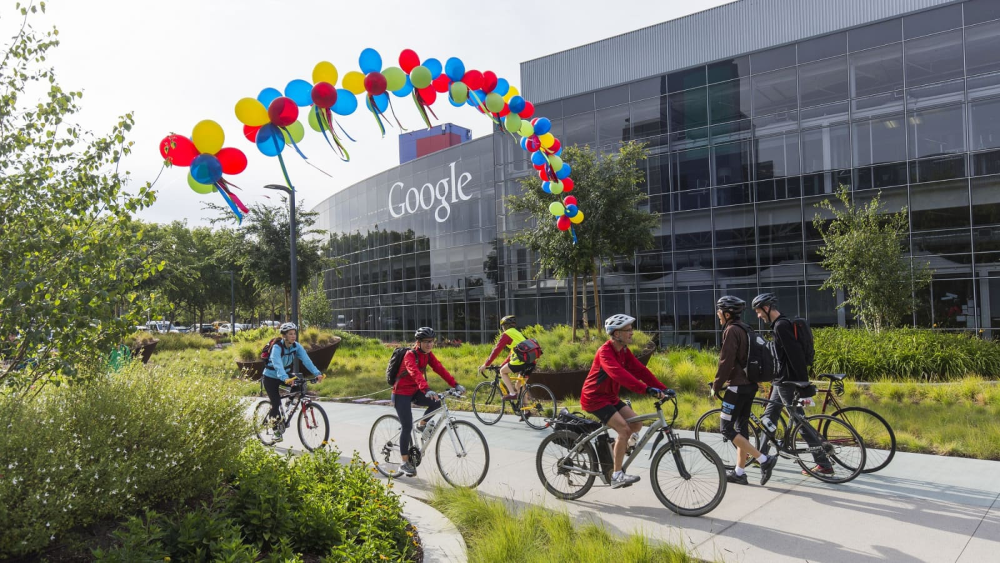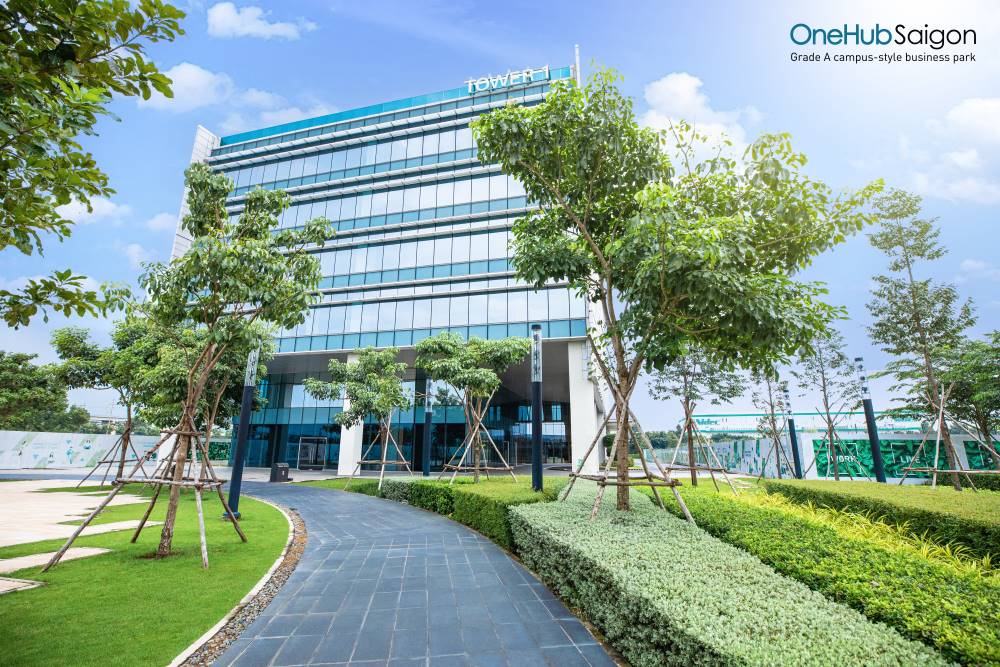Is the Hybrid Working model truly ideal?

Hybrid working, also known as blended working, is a model that combines office-based work with remote work. This model has become increasingly popular after the outbreak of the COVID-19 pandemic, which caused significant changes in the way many businesses operate. Since the pandemic, the hybrid working model has been widely adopted by more and more businesses. But why is this working model so attractive?
What is the Hybrid Working model?
Definition
Hybrid work, also known as “Hybrid work,” refers to a flexible work environment in which employees have the ability to work in the office and remotely. Working time in this model is usually based on an agreement between the employee and the organization, and it can vary depending on the specific goals and needs of the business. Specifically, the way a hybrid work model is implemented can vary from one business to another, there is no hard and fast rule for this model.
Why has the Hybrid Working model become a trend today?
If “Remote Working” became a trend in 2020, “Hybrid Working” seems to be the most popular option in the post-pandemic era. From surveys, opinion polls, or even conversations on LinkedIn, people seem to be favoring this flexible work model. And companies have also realized this. However, the hybrid working model is still in the “experimental” phase.
Why has Hybrid Working become the current trend?
A growing number of countries have eased pandemic-related restrictions, allowing employees to return to their offices. This explains why many leaders are asking employees to return to their offices, at least once or twice per week. Some companies have even implemented a rotating model, where teams work in the office one week and work remotely the next. Or there are companies that give employees the freedom to choose whether they want to work in the office or remotely.
According to Eden Workplace’s survey, about 15% of employees prefer to work remotely, 23% want to work in a traditional office and the remaining 62% choose a hybrid work model. In particular, the majority of Gen Z employees also like the flexibility that the hybrid working model brings. In fact, 81% of workers believe that work location and work hours significantly affect job performance. Therefore, the application of a combined working model is being highly appreciated and valued in businesses.
The trend of hybrid working is coming
1.1 The most optimal working model after the pandemic
US businesses are well-known for their constant innovation and application of new models to find the most optimal operating solutions, especially in the technology industry. Since the COVID-19 pandemic, the hybrid working model has become increasingly popular among many US businesses as the official working model instead of remote working. This combined working model is predicted to create a sense of self-motivation, efficiency, while still maintaining connections and cohesion among departments within the company.
The hybrid working model differs from remote working
Many companies still choose to rent office spaces, believing that a direct working environment will bring more efficiency than remote working. These businesses require employees to come to the office 3-4 days a week instead of working remotely full-time. For example, the software company Conductor headquartered in New York is willing to rent office space of over 4500m2 at a high cost just for 200 employees to work in the office for 3 days a week.
1.2 Expert’s Opinion
According to Seth Besmertnik, the CEO of Conductor, cost savings are not as important as a comfortable working environment for employees at the company. This model is also being fully implemented by many tech giants, such as Google, Amazon, Facebook, Twitter, and others.
Currently, the hybrid working model is an effective approach that many businesses are adopting. It can be said that the model was created for technology businesses, where data and electronic products like software can easily circulate and be stored due to cloud storage technology.
Google – one of the Big Four technology companies has adopted the hybrid working model
Hybrid Working model – What are the benefits and drawbacks?
2.1 “Easy to think but hard to implement” for businesses
The hybrid working model is believed to bring a relaxed working environment, allowing employees to work freely and creatively while maintaining high efficiency. Additionally, this model provides the necessary interaction to keep the business running smoothly.
However, many businesses are facing challenges in implementing this working model, especially those that have been experiencing remote working during the COVID-19 pandemic. Employees who have been working remotely tend to be unwilling to come back to the office anymore.
Learn more: Advantages and disadvantages of the hybrid working model
Many employees prefer to be full-time remote workers instead of returning to the office post COVID-19 pandemic
2.2 Practical example
The technology giant Amazon, after a long period of remote working implementation, has caused employees to no longer feel attached to working directly at the office, even if they work only 3 days a week. Amazon employees prefer working from home because they can spend more time with their families and are not being monitored as they would be in the office. However, Amazon CEO Andy Jassy believes that employees need more interaction in their work to achieve higher efficiency.
It is evident that the impact of remote working has led to employees no longer preferring to physically go to the office, which can negatively affect work efficiency and company cohesion. However, if a business is currently operating under a traditional working model, is it really easy to transition to a hybrid working model? While most employees may support this approach, its implementation may also pose risks for businesses.
2.3 Risks for businesses when adopting hybrid working model
It is difficult to please all businesses and employees with any working model. The question is, can the hybrid working model be a compromise that satisfies everyone? Does this model meet the desire for a free working environment while providing productivity and efficiency for businesses?
The hybrid working model can indeed offer work autonomy for employees, yet for businesses, it presents a challenge as they cannot exert full control over employees as they can in a direct working model. Just as businesses need continuous experience and adaptation to effectively implement this model in the long run. If executed well, this model has the potential to yield positive outcomes for both businesses and employees.
Meanwhile, businesses aiming to “experiment” with the hybrid working model, they encounter barriers concerning procedures, policies, management approaches, and more. Due to the absence of a standardized framework tailored to this working model, most companies adjust and gradually adapt over time to make this model increasingly effective for their businesses.
Hybrid Working Model: Balance between new and traditional values
3.1 Positive “transformation” from the Hybrid Working model
Hybrid working serves as the intersection between the traditional working model and remote work. Its characteristic features encompass openness and flexibility while maintaining certain company standards. This approach fosters the necessary creativity within the office environment, alongside comfort and easy adaptability when working from home. When the hybrid working model is implemented, employees’ mental well-being improves and stress is significantly reduced. This aligns with the workforce’s needs for “work-life balance”.
The key to the hybrid working model is striking a balance between freedom and discipline
Moreover, employee interaction within the business is also maintained. A study conducted by the Massachusetts Institute of Technology (MIT) has shown that the formation of social relationships (measured by the number of emails exchanged between individuals) decreases by 38% when working remotely. This implies that when not working at the company, employees have fewer connections with each other. Therefore, this can impact the overall work quality of a large group.
3.2 Good solutions for today’s businesses?
It can be seen that the hybrid working model is a good solution for many businesses today, especially technology companies. It offers a balance between discipline and freedom. If operated effectively, this model can help businesses achieve sustainable development and adapt easily to significant changes. Meanwhile, employees can maintain a proper work-life balance.
Hybrid working helps employees achieve a better balance between work and life
As businesses increasingly adopt the hybrid working model, the future of the office market may be affected, as companies are less focused on the CBD. Instead, offices may be located in suburban areas following the trend of “urban decentralization”. This shift aims to reduce the strain on large cities while maintaining a high standard of work quality.
OneHub Saigon – A new Campus-Style Business Park embracing the trend of Hybrid Working
4.1 Getting ahead of the Decentralization wave
The strong development of decentralization is evidenced by businesses proactively relocating offices to peripheral areas of the city in response to challenging economic conditions. As a result, finding a suitable place to establish offices while ensuring various aspects of well-being and morale has always been a difficult question for many companies.
In order to create a dynamic and unrestricted working environment for businesses, OneHub Saigon was established with a focus on placing human beings at the center. It is not just a place for people to come and work but also a place for living, entertainment, and learning. Simultaneously, it effectively addresses the current shift in office relocation following the decentralization trend.
4.2 OneHub Saigon – A new Campus-Style Business Park
This is a unique campus-style office project that is particularly suitable for the hybrid working model. It boasts a convenient location within the Saigon Hi-Tech Park, with just over a 20-minute commute from the central business districts. This advantageous position helps reduce traffic congestion and creates a comfortable commuting experience by avoiding peak hours and traffic jams.
Tower 1 – A Green-certified office building in OneHub Saigon
OneHub Saigon is an Integrated Business Park spanning a total floor area of 160,000 square meters across seven office buildings. It offers various spatial solutions to accommodate different needs, ranging from traditional offices with flexible spaces to larger office requirements. Currently, Tower 1 and the surrounding green areas are fully operational and effectively meet the demands for office rental. Let’s delve into an analysis of Tower 1 within the OneHub Saigon Business Park to understand why it stands as an ideal choice for businesses.
Spacious open floor plate without columns at Tower 1
4.3 The Onehub Saigon’s Tower 1
Tower 1 features large floor plates of up to 2000m2 per level, featuring high ceilings and an open layout that provides a continuous sense of spaciousness. This design fosters flexibility in the company’s space arrangement and contributes to cost savings in operations. Moreover, the 3-meter high ceilings ensure a consistently airy environment, while the soundproof, thermal-insulated glass, along with fire-resistant walls that enhance safety and tranquility in the workspace. Additionally, Tower 1 has achieved LEED Silver certification for green office buildings guaranteeing quality environmental factors both inside and outside the building.
Tower 1 operates continuously 24/7 allowing employees to access the company whenever needed. This feature is crucial and suits businesses with flexible working hours, such as software companies, game developers, R&D departments, logistics, and more.
Expansive lush greenery for recreational and sports activities
4.4 Construction density and green space at OneHub Saigon
Furthermore, when a young workforce is experiencing excessive workloads, stress or burnout, having a green space to alleviate negative feelings becomes crucial. This provides employees with a private area to regulate their emotions. At OneHub Saigon, with a low construction density (40%) alongside a high proportion of lush greenery (over 30% of the total area), and space dedicated to recreational and sports activities such as jogging, cycling, badminton, soccer… Employees become more connected when the company adopts the hybrid working model. The lush greenery at OneHub Saigon not only promotes employee bonding but also creates a comfortable and dynamic working environment aligning with the “work-life balance” concept.
Read more: What is a “desirable” green office for businesses?
OneHub Saigon is undoubtedly a shining example. In the future, when the office buildings and integrated business parks are fully completed according to the project scale, it is bound to take center stage in the office rental market, especially amid the prevailing trend of decentralization.
OneHub Saigon is an excellent office space for businesses to implement the hybrid working model
Conclusion
In reality, there is no universal framework for the hybrid working model that businesses can simply adopt and implement. A well-functioning company will naturally create a sense of connection and familiarity with the office environment for its employees, without the need for enforced policies or strict regulations. If considering adopting this model, businesses should choose good office workspaces, establish a comfortable work environment and enable employees to achieve optimal productivity. A high-quality Grade A office building like OneHub Saigon would be an excellent choice.
The adoption of the blended work model has been demonstrated by many major corporations to produce favorable results. Both businesses and employees enjoy advantages that traditional models find difficult to furnish. Nevertheless, the extensive integration of this flexible working approach still presents a challenge for many enterprises, given its novelty and innovative nature.
See more: 70 million USD data center project 1Hub Data Center













